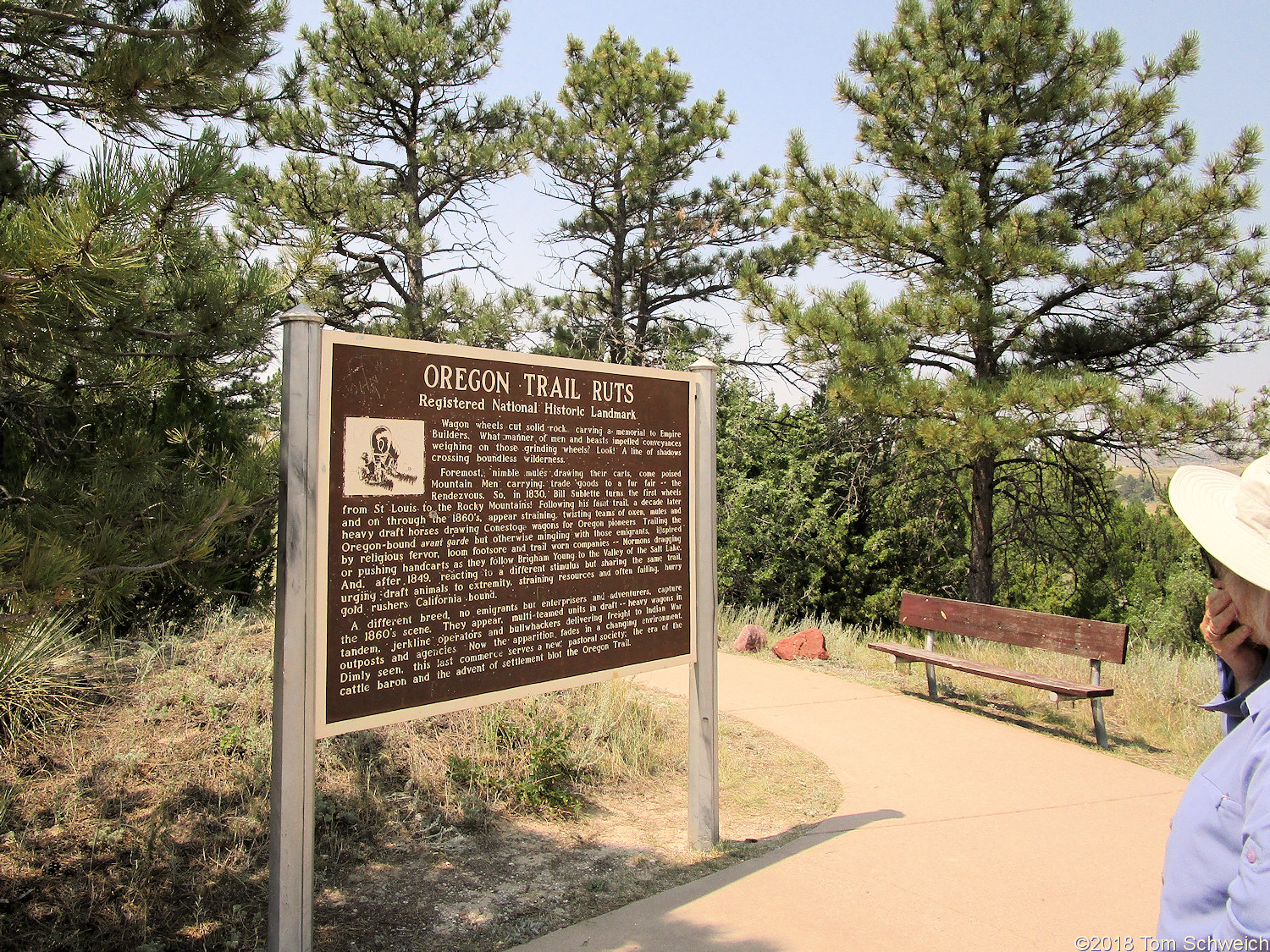|
Wagon wheels cut solid rock,
carving a memorial to Empire Builders.
What manner of men and beasts impelled
conveyences weighing on those griding wheels?
A line of shadows crossing boundless wilderness.
Foremost, nimble mules drawing their carts,
come poised Mountain Men carrying trade goods to a fur fair — the Rendezvous.
So, in 1830, Bill Sublette turns the first wheels
from St. Louis to the Rocky Mountains.
Following his faint trail,
a decade later and on through the 1860's,
appear straining, twisting teams of oxen,
mules, and heavy draft horses drawing Conestoga wagons for
Oregon pioneers.
Trailing the Oregon-bound avant garde
but otherwise mingling with thise emigrants,
inspired by religious fervor,
loom footsore and trail worn companies —
Mormons dragging or pushing handcarts as they
follow Brigham Young to the Valley of the Salt Lake.
And, after 1849, reacting to a different stimulus
but sharing the same trail,
urging draft animals to extremity,
straining resources and often failing,
hurry gold rushers California bound.
A different breed,
no emigrants but enterprisers and adventurers,
capture the 1860's scene.
They appear, multi-teamed units in draft —
heavy wagons in tandem, jerkline operators
and bullwhackers
delivering freight to Indian War outposts and agencies.
Now the apparition fades in a changing environment.
Dimly seen, this last commerce serves a new pastoral society;
the era of the cattle baron and the advent of
settlement blot the Oregon Trail.
|
 Eastern Mojave Vegetation
Eastern Mojave Vegetation
 Eastern Mojave Vegetation
Eastern Mojave Vegetation

